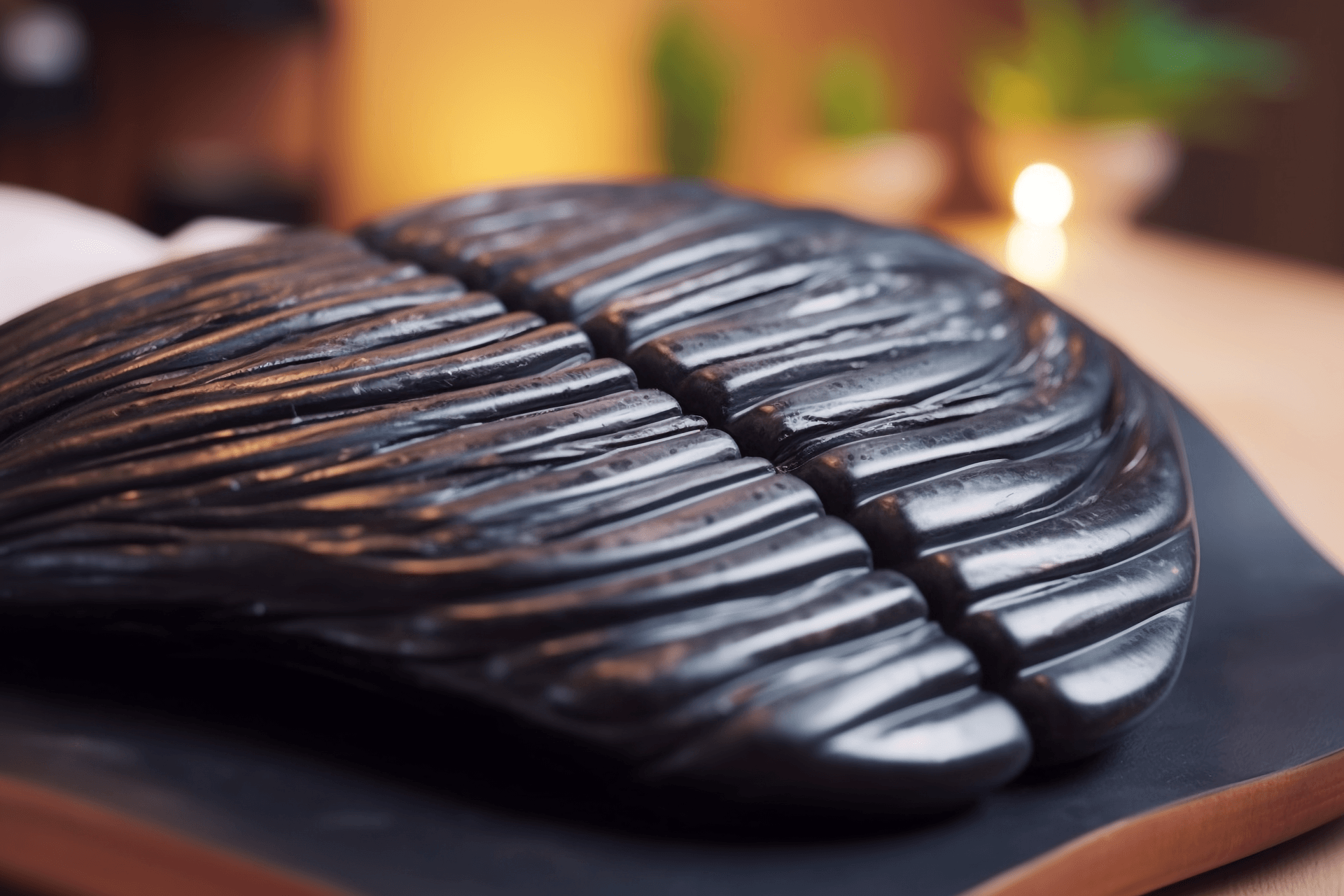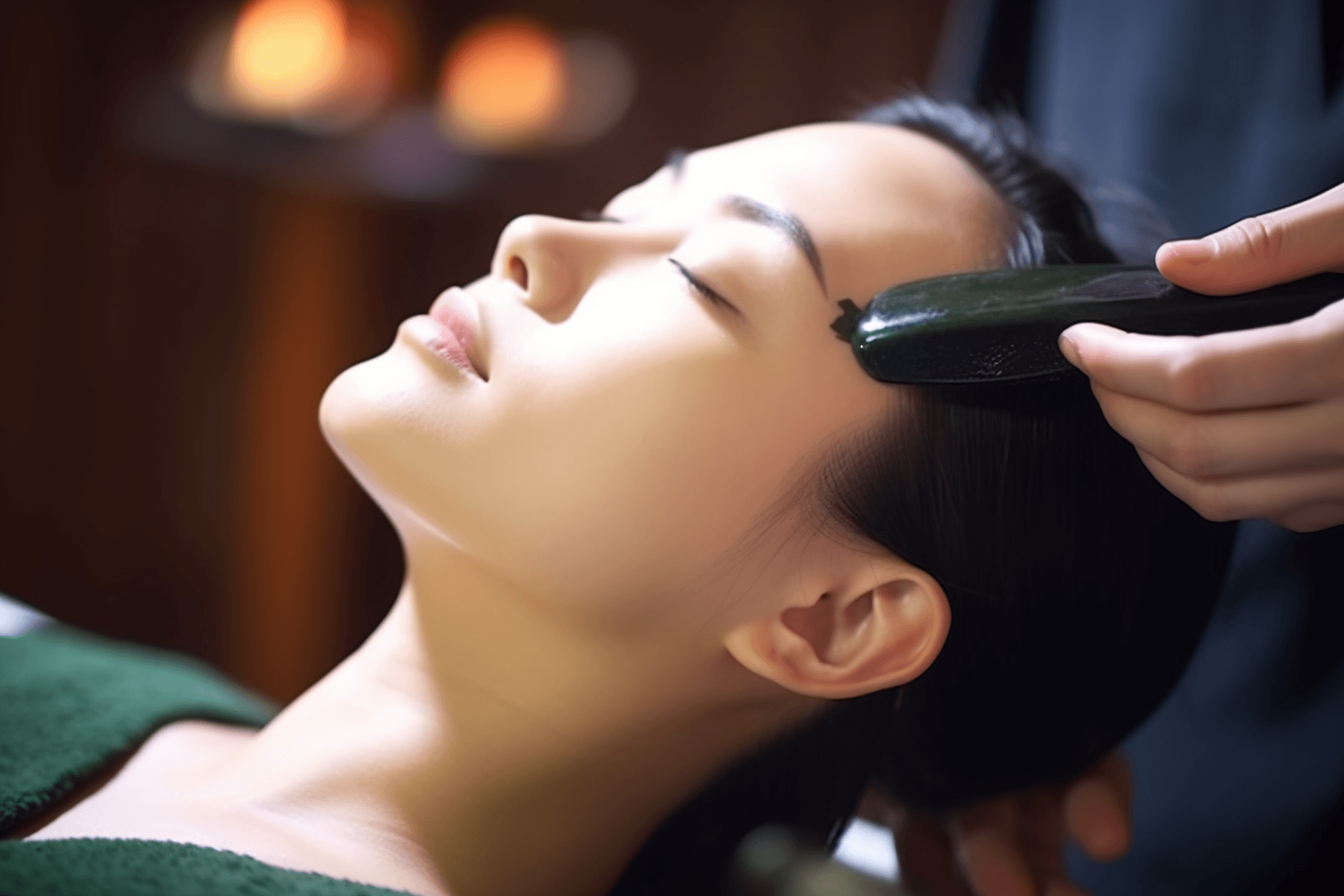
In the scorching summer, many people choose to use "cooling" methods to cope with the heat, such as using air conditioning, drinking cold beverages, and eating watermelon. In fact, traditional Chinese medicine offers many effective methods for relieving heat, and scraping therapy is one of them. Scraping therapy can help release the accumulated dampness and heat in the body's surface, promoting heat dissipation and providing a calming and refreshing effect.
Scraping therapy: both tonifying and purging
Scraping therapy is a traditional external treatment in Chinese medicine. It involves using a blunt-edged tool dipped in plant oil or water to repeatedly scrape along the meridians on the body, from top to bottom and from the inside out. This process creates tiny blood spots on the skin, resembling sand grains, known as "sha" marks or "sha" spots. By stimulating the body's qi and blood circulation, scraping therapy can expel pathogenic factors and promote self-healing, thus achieving the purpose of treating diseases.
Summer is dominated by heat in the seasonal qi, and if precautions are not taken to avoid heat, it can lead to heatstroke. The typical symptoms of heatstroke include dizziness, blurred vision, weak sweating, and in severe cases, fainting and shock. According to Chinese medicine, this is mainly caused by the combination of high temperatures and excessive exertion, resulting in depletion of the body's vital energy and the invasion of pathogenic heat.
Through scraping therapy, the capillaries on the surface of the body can dilate, promoting the circulation of qi and blood. This can help dissipate heat and eliminate pathogenic dampness, providing a cooling and refreshing effect.
In addition, according to traditional Chinese medicine theory, it is often said that "tonify when deficient, purge when excess." However, scraping therapy has the unique ability to tonify and purge at the same time. It can not only relieve heat, but also promote the expulsion of pathogenic factors, improve blood circulation, relax the muscles and tendons, support the body's vitality, enhance metabolism, and harmonize yin and yang. As a result, it can alleviate various discomforts in the body.
Sha marks: the depth of color does not necessarily indicate severity of "fire"
Some people believe that the dark color of sha marks left after scraping indicates a greater presence of "fire" in the body. They think that shades of purple to black represent excessive coldness in the body, while shades of bright red to flushed red represent the presence of wind, dampness, or heat. On the other hand, a pale red color is considered normal. However, it is not appropriate to judge the severity of cold or heat based solely on the color of the sha marks.
The process of sha formation involves the rupture of capillaries due to external pressure, resulting in a small amount of blood entering the interstitial space and forming blood stasis spots on the skin. The stimulation causes vasodilation, which helps to disperse stagnation and pathogenic factors, clearing the meridians and regulating the organs, thereby treating diseases.
In clinical practice, some people may have purple sha marks, while others may have red ones. There are also some cases where no sha marks appear at all. The depth and intensity of the sha marks are only reference points, and the specific judgment relies on the observations of the practitioner. However, the health condition can be assessed based on the different locations of sha marks and their forms.
If sha marks are prone to appear along the pathways of meridians and acupoints, it suggests that there may be pathological changes in the corresponding internal organs connected to those meridians. Bright red, dot-shaped sha marks usually indicate surface conditions with a short course and mild severity, suggesting a good prognosis. Dark red, patchy or clot-like sha marks often indicate internal conditions with a long course and severe severity, suggesting a poor prognosis.
As scraping therapy progresses, the color of the sha marks changes from dark to red, and from patches to scattered dots, indicating an improvement in the condition and the effectiveness of the treatment. Individuals who are healthy or those who use scraping therapy for weight loss, beauty, or health maintenance generally do not exhibit obvious sha marks.
Areas and conditions where scraping therapy is not suitable
Scraping therapy is not only effective for relieving heat, but also applicable to various internal and external diseases in women, children, and other fields, making its scope of application very wide. The main conditions suitable for scraping therapy include respiratory diseases such as cold and cough, gynecological diseases such as breast diseases and menstrual disorders, external diseases such as eczema, stiff neck, sore throat, and tinnitus, as well as conditions involving poor meridian circulation, such as cervical spondylosis, lumbar disc herniation, frozen shoulder, and hypertension.
Generally, the main areas for scraping therapy are the back, and sometimes the neck, chest, or limbs can also be selected. However, scraping therapy should not be performed on the eyes, lips, tongue, ear holes, nostrils, nipples, umbilicus, perineum, or on areas with acute sprains, trauma, or fractures.
Not everyone can undergo scraping therapy. It is not suitable for individuals who are excessively thin, have skin lesions in the treatment area, have severe cardiovascular or cerebrovascular diseases, have liver or kidney dysfunction, are suffering from general edema, are pregnant, or have a tendency to bleed (such as advanced diabetes, severe anemia, leukemia, aplastic anemia, or thrombocytopenic disorders). Otherwise, it may worsen the condition.
In addition, scraping therapy should not be performed on individuals who are excessively hungry or full, overly fatigued, or intoxicated. Therefore, can children use scraping therapy? Yes, it is possible, but scraping therapy should be avoided on the head when the fontanelle is not closed.
Precautions for scraping therapy
During the scraping therapy process, patients should pay attention to the following points:
1. The scraping technique should be gentle, scraping from top to bottom, and the skin should be kept lubricated by dipping the tool in plant oil or water. This helps to avoid dry scraping and skin injuries.
2. Within 24 hours before and after scraping therapy, alcohol should be avoided and vigorous exercise should be limited. For those who experience a significant amount of sha marks or have their entire back scraped, dietary guidance should be provided based on individual constitution. A light diet is recommended after scraping therapy to enhance metabolism and eliminate toxic sha marks.
3. After scraping therapy, the treated area should not be exposed to cold drafts or water for 4 hours. Taking a shower on the same day should be done using hot water.
4. Nursing mothers should be cautious with scraping therapy. If scraping therapy is necessary, breastfeeding should be avoided for five days after treatment.




